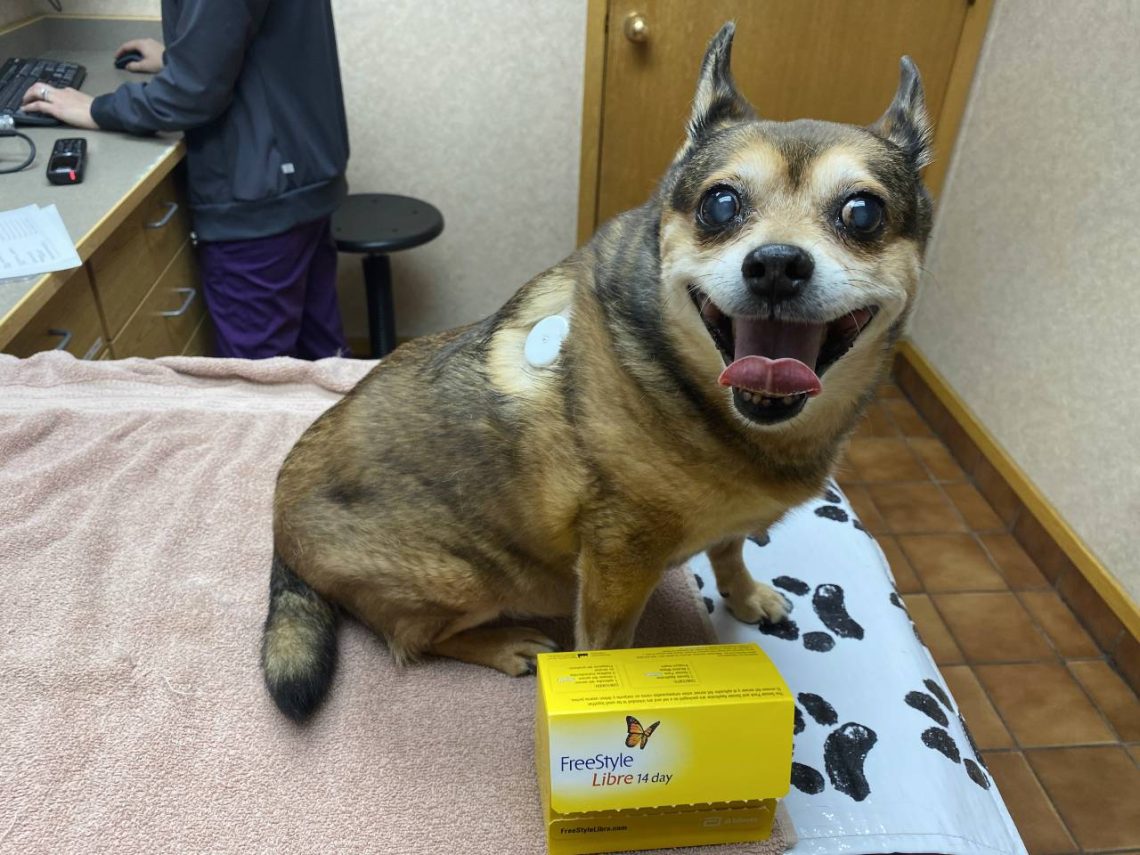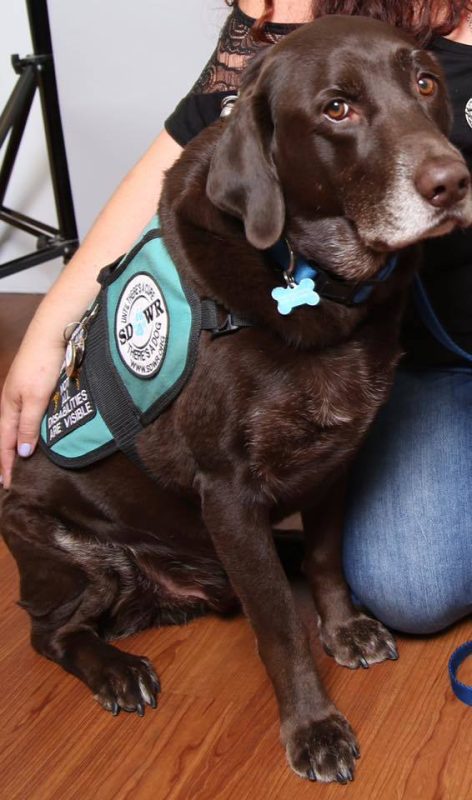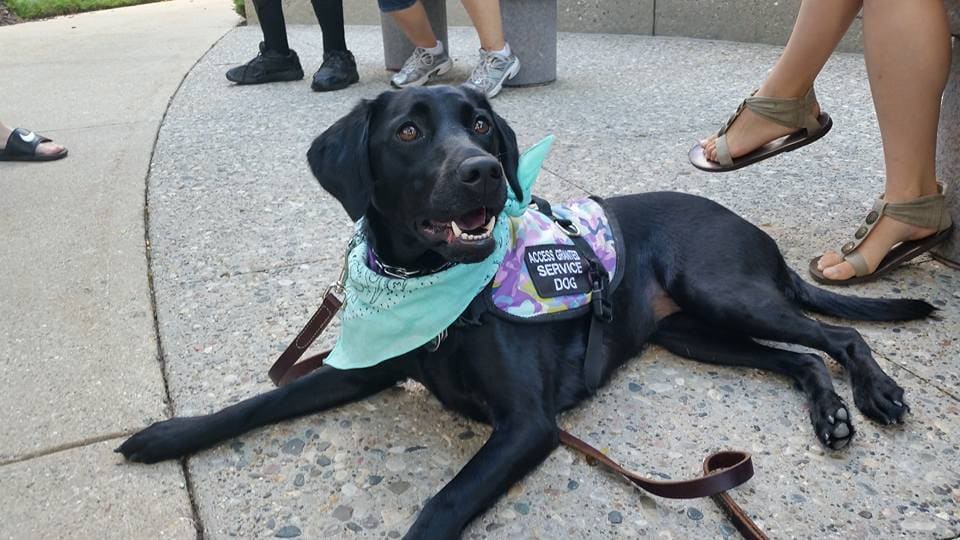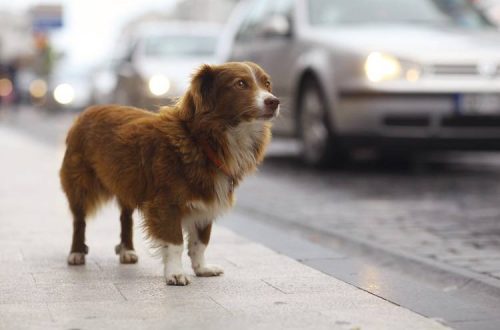
Diabetic dog: a live glucometer to help the owner
Some service dogs are trained to warn of diabetes. How do dogs detect diabetic blood sugar spikes? What exactly is the peculiarity of their training and how can these pets warn their owners about such differences? About two dogs and how they help their family – further.
Michelle Hyman and Savehe
 When Michelle searched the internet for information about dogs trained to warn of diabetes, she carefully researched all the canine centers before making a decision. “The organization I ended up adopting a diabetic alert dog from is called Service Dogs by Warren Retrievers,” says Michel. “I chose her after researching a lot of options online and asking a lot of questions during a phone consultation. It was the only company that helped me with everything, including the delivery of a pet and constant individual training at home.
When Michelle searched the internet for information about dogs trained to warn of diabetes, she carefully researched all the canine centers before making a decision. “The organization I ended up adopting a diabetic alert dog from is called Service Dogs by Warren Retrievers,” says Michel. “I chose her after researching a lot of options online and asking a lot of questions during a phone consultation. It was the only company that helped me with everything, including the delivery of a pet and constant individual training at home.
However, before Michelle brought her service dog, the animal went through an intensive training course. “All Service Dogs by Warren Retrievers puppies go through countless hours of training before they are sent to a new owner. Before heading to their new permanent home, each four-legged friend works with a volunteer for nine to eighteen months, undergoing a training course under the guidance of professional dog handlers, says Michelle H. During this period, the organization works directly with its volunteers on a monthly basis. by attending training sessions and conducting ongoing assessment throughout the process.”
The training doesn’t end there. Diabetes warning service dogs should be paired with their new owner to ensure that both human and animal learn the right commands and understand the appropriate lifestyle needs. Michelle H. says, “The best thing about the Service Dogs by Warren Retrievers program was that the training was tailored to my needs and completely personalized. When the dog was brought to me, the trainer spent five days with us. Subsequently, the company provided continuous home training for eighteen months, followed by a one-two-day visit once every 3-4 months. If I had questions, I could contact my trainer at any time and he was always very helpful.”
So what does the aptly named dog SaveHer do to help Michelle? “My service dog alerts me to blood sugar fluctuations several times a day and also at night when I sleep,” says Michel.
But how does Savehe know that Michelle’s blood sugar is changing? “It detects low or high blood sugar levels by smell and sends out trained or natural signals. During training, he was trained to come up to me and touch my leg with his paw when my blood sugar level increased or decreased. When he comes over, I ask him, “High or short?” – and he gives me another paw if the sugar level is high, or touches my leg with his nose if it is low. As for natural warnings, he whines when my blood sugar is out of range, like if we’re in a car and he can’t come up and touch me with his paw.”
Thanks to training and the contact established between Savehe and Michelle, they have established a bond that saves a woman’s life. “Raising a dog with effective diabetic alertness requires a lot of focused effort, dedication and hard work,” she says. – The dog comes to your house already trained, but you must learn how to successfully apply what he has been taught. The effectiveness of the pet will directly depend on the amount of effort invested in it. What could be better than a cute service dog helping you with a serious illness like diabetes.”
Ryu and the Krampitz family
Ryu is another dog trained by Warren Retrievers who now lives in her permanent home with Katie and her parents Michelle and Edward Krampitz. “When Ryu came to us, she was seven months old and had already been trained in behavior in public places,” says her mother, Michelle K. “In addition, trainers came to us periodically to reinforce the learned behaviors and practice new skills.”
Like Savehe, Ryu has undergone a special training course to gain skills that allow her to meet the needs of her “ward” diabetic. In Ryu’s case, she was able to communicate with other family members so that they too could help take care of Katy. “Ryu has also been trained to detect odors to warn of fluctuations in blood sugar levels,” says Michelle K. “When blood sugar levels rise, a diabetic person emits a sugary-sweet smell, and when it falls, it smells sour. A dog’s sense of smell is several thousand times better than a human’s. Our daughter Katie’s safe blood sugar range is 80 to 150 mg/dL. Ryu warns us of any readings outside this range in either direction. Even if other people can’t spot the smell, Ryu associates it with high or low sugar.”

Ryu’s signals are similar to Savehe’s, the dog also uses its nose and paws to alert the family that Katie’s blood sugar is out of range. Michelle K. says: “Sensing the change, Ryu walks up to one of us and paws, and then when asked if Cathy’s sugar is high or low, she either paws again if it’s high, or rubs her nose on his leg if short. Ryu constantly monitors Katie’s blood sugar and alerts us about it many times a day. This allows for better control of Katie’s blood sugar levels and results in an overall improvement in her health.”
Environmental changes and a person’s actions can affect their blood sugar levels. Michelle says: “Exercise, sports, illness, and other factors can often cause blood sugar levels to spike.”
Dogs with diabetic alertness work at all times, even when resting. “Ryu once woke Katie up early in the morning with dangerously low blood sugar levels that could lead to blackouts, coma, or worse,” says Michelle K. “Ryu also often warns Katie about dangerous highs. High blood sugar levels can cause invisible damage to internal organs, sometimes leading to organ failure later in life. Responding quickly to Ryu’s warnings and correcting such increases will help keep Katie healthy in the long run.”
Since service dogs do their job all the time, they need to be allowed into public places. Michelle K. says, “You don’t have to be disabled to enjoy the benefits of a service dog. Type 1 diabetes is one of several “hidden” diseases for which service dogs provide invaluable assistance. No matter how cute others find Ryu, they must remember that she is working and should not be distracted. Under no circumstances should you pet a service dog or try to get its attention without asking permission from its owner. Ryu wears a special vest with patches stating that she is a diabetes warning dog and asks those around her not to pet her.”
The stories of Savehe and Ryu will help those who suffer from diabetes or want to help their loved ones. With proper training and close bonding with the family, both pets have a huge impact on the health and lives of their owners.





